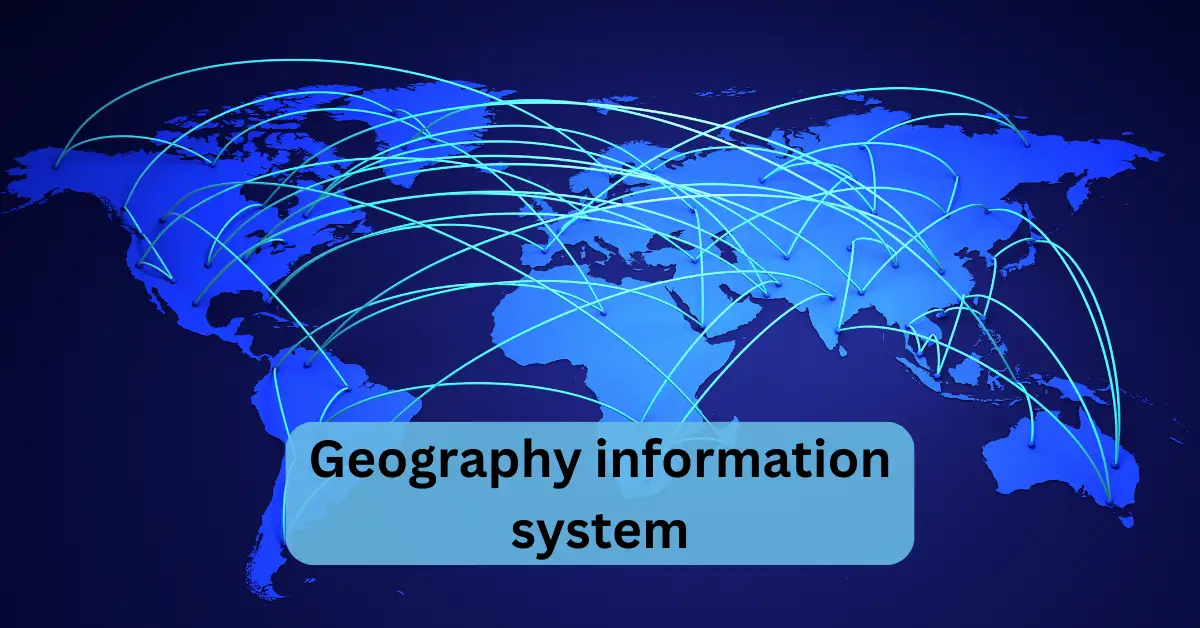Geographic Information System (GIS) is a powerful system that creates, manages, and analyzes different types of data by connecting location data with descriptive information. It forms the foundation of mapping and analysis in the science and industry of geography, enabling users to understand patterns and relationships in a geographic context. The benefits of GIS include improved communication, efficiency, and better management for informed decision making.
Renewable energy sources are diverse, including solar, wind, hydropower, geothermal, and biomass. These sustainable options harness nature’s power, reducing dependence on fossil fuels and mitigating environmental impact.
What is GIS?
Geographic Information Systems (GIS) are a computer-based tool that analyzes and visualizes data related to geographic positions on the Earth’s surface. This powerful technology examines spatial relationships and patterns in geography, providing insights into trends. By utilizing GIS, one can effectively store and manage geographic data in a database, facilitating the ability to analyze and find patterns in the data and ultimately display them on a map.
Definitions of GIS
A geographic information system (GIS) is a powerful computer system that creates, manages, and analyzes spatial data. It maps and connects various types of information to a specific location on the Earth’s surface. Developed by the Environmental Systems Research Institute (Esri) and widely used by organizations like the United States Geological Survey (USGS), GIS captures, stores, checks, and displays data related to positions on the Earth’s surface. This system integrates location data with descriptive information, allowing for a comprehensive understanding of the environment.
What Is GIS? A Guide to Geographic Information Systems
Geographic Information Systems (GIS) are powerful tools that enable individuals to adjust and analyze spatial data, providing valuable insights into the world around us. What is GIS exactly? In essence, it is a technology that captures, stores, and manages geographical information. Through the integration of various data layers, GIS allows users to make informed decisions based on a comprehensive understanding of spatial relationships. Whether in urban planning or environmental monitoring, the versatility of geographic information systems has become indispensable in diverse fields.
What are the Use Cases of GIS?
Geographic Information Systems (GIS) play a pivotal role in shaping decisions worldwide, profoundly impacting lives across various domains. For example, businesses utilize GIS to optimize their operations by analyzing store locations, while emergency services rely on it to track power outages and understand crime patterns. In the realm of transportation, in-car navigation systems leverage GIS for efficient route planning. The influence of GIS extends to monitoring and predicting weather, showcasing its diverse applications.
How To Visualize Geography with Maps
Geographic Information Systems (GIS) revolutionize how we understand and analyze geographic information. By integrating maps and spreadsheets, GIS allows us to visualize geographic context and identify patterns and trends. Users can easily calculate and find optimal routes between cities while efficiently checking and adjusting data points, making it an invaluable tool for decision-making in various fields.
Components of Geographic Information Systems
The 3 main components of Geographic Information Systems are:
1. Data
In the realm of GIS, the data storage revolves around a well-defined structure, accommodating diverse layers, features, and their corresponding attribute tables. The spatial component of GIS allows for the effective handling of spatial data, enhancing the analysis of geographical attributes. This integrated approach facilitates seamless interactions with diverse types of information, making GIS a versatile tool for comprehensive spatial analysis.
2. Hardware
A Geographic Information System (GIS) is a pivotal tool in modern spatial data management. The hardware aspect of GIS involves a personal GIS workstation equipped with a robust CPU and crisp graphic processing cards. The efficiency of GIS relies on the utilization of powerful servers for seamless data processing. GIS users often benefit from a setup with dual monitors to enhance visual analysis. Moreover, having extra storage is crucial to accommodate vast spatial datasets.
3. Software
Geography information systems (GIS) revolutionize the way geography is analyzed and understood through the use of modern technology. GIS software like ArcGIS and QGIS empowers leaders and decision-makers by providing tools for spatial analysis. By applying math to data, these systems help measure and quantify various aspects of the world, allowing for a more nuanced comprehension of complex relationships. With the ability to create and manipulate maps, GIS plays a crucial role in shaping our understanding of the interconnected nature of our surroundings.
Drive Decisions with Spatial Analysis
Geography Information System (GIS) is a powerful tool that provides a geospatial perspective on various global issues, including climate change, natural disasters, and population dynamics. By harnessing the power of GIS, we can analyze and visualize complex geographic data through interactive maps. This technology goes beyond traditional paper maps, offering a dynamic platform for spatial analysis and enabling us to gain valuable location-based knowledge and insights.
Buffer
Geography Information System (GIS) is a powerful tool for analyzing spatial data. It allows users to manipulate and visualize geography-related information through various tools and functionalities. One essential feature of GIS is the buffer tool, which creates a zone around a specified polygon or point. This tool is particularly useful for assessing distance and analyzing features within the defined buffers. By using GIS, researchers can easily examine the characteristics of areas surrounding a specific location and gain valuable insights into the spatial relationships between different elements.
Hot Spot
Geography Information System (GIS) is a powerful tool for handling spatial data and providing insights into geographical information. It involves the collection, analysis, and visualization of data related to geographical features, allowing users to create informative maps that represent various spatial relationships. Through techniques such as remote sensing and utilization of satellite imagery, GIS enables effective data integration for a comprehensive understanding of the Earth’s surface. This technology plays a crucial role in diverse fields, utilizing geographic data to adjust and enhance decision-making processes in areas like urban planning, environmental management, and disaster response.
Build Your Career in Geomatics
Geographic Information System (GIS) is a powerful tool that Robert Williams and other spatial thinkers utilize for navigating ships and solving spatial problems. In 2012, 60% of government data was incorporated into GIS, aiding government policymakers in effective planning. The influence of GIS spans across various disciplines, making GIS careers a booming field as researchers adjust to its ability to provide insights into geographic contexts.
GIS All Started by Mapping Cholera
In 1854, a devastating cholera outbreak swept through the bustling city of London, England. However, it was the British physician John Snow who made an interesting and groundbreaking geography-related discovery during this health crisis. By mapping the cholera cases and their relation to water lines, roads, and property boundaries, Snow was able to identify a common point of origin for the disease. This marked the beginning of spatial analysis in epidemiology and laid the foundation for public health safety through the use of geographic information system (GIS).
GIS Uses and Applications
Geographic Information Systems (GIS) have become an indispensable tool in various fields, with example use cases spanning a diverse range of applications. From aiding environmental efforts such as conservationists monitoring climate change and conducting impact assessments to facilitating groundwater studies, GIS plays a crucial role. Additionally, GIS Analysts contribute to military operations through location intelligence, assisting in logistics management and utilizing data from spy satellites.
What Can GIS Do For You?

Geographic Information Systems (GIS) are powerful tools that answer crucial questions about the location and patterns of various elements in the environment. By analyzing geographical patterns and trends, GIS allows us to determine the optimal locations for diverse needs, from finding the closest gas station to connecting major roadways based on traffic volumes. It integrates data such as zoning information, demographics, and even animal habitats from GPS collars to correlate information like preferred land types and animal locations.
What is Geographic Information Science (GISc)?
Geographic Information Science (GIScience) explores how the development of GIS incorporates knowledge from diverse fields such as computer science, mathematics, geography, statistics, cartography, and geodesy. It serves as a bridge between these disciplines, creating a synergy that enhances our understanding of the spatial world. The growth of GIScience in the upcoming years poses a significant question about what it understands best, paving the way for continuous development.
What are Geographic Information Systems?
What is Geographic Information System (GIS)? It’s a tool that allows geographers to adjust how they view and analyze data. With GIS, questions that once seemed insurmountable become solvable. The system enables geographers to interpret data dynamically, adjusting their perspective to gain insights into the world’s complexities. Through GIS, the once static and cumbersome process of working with paper maps has transformed into a dynamic and efficient means of recording, storing, and analyzing data.
Conclusion
In conclusion, Geographic Information System (GIS) emerges as a versatile and indispensable tool with its ability to create, manage, and analyze diverse data types while integrating location data and descriptive information. Serving as the foundation for mapping and analysis, GIS significantly contributes to improved communication, enhanced efficiency, and better decision-making across various sectors.
Common Question of Geography
Who is the father of GIS?
It was Dr. Roger F. Tomlinson who first coined the term geographic information system (GIS). He created the first computerized geographic information system in the 1960s while working for the Canadian government—a geographic database still used today by municipalities across Canada for land planning.
What is the scope of GIS?
The scope of Geographic Information System (GIS) technology is broad and far-reaching, with applications in a wide range of industries and disciplines. GIS technology is used to capture, store, manipulate, analyze, manage, and present spatial data, and to support decision making in a variety of contexts.
What is spatial data in GIS?
Spatial data is any type of data that directly or indirectly references a specific geographical area or location. Sometimes called geospatial data or geographic information, spatial data can also numerically represent a physical object in a geographic coordinate system.
What is raster size?
Raster images are of a certain size, such as 800×600 for the sample image above, indicating the image is 800 pixels wide and 600 pixels high. This size affects both the size of the image file and how the image looks on screen or when printed out.







